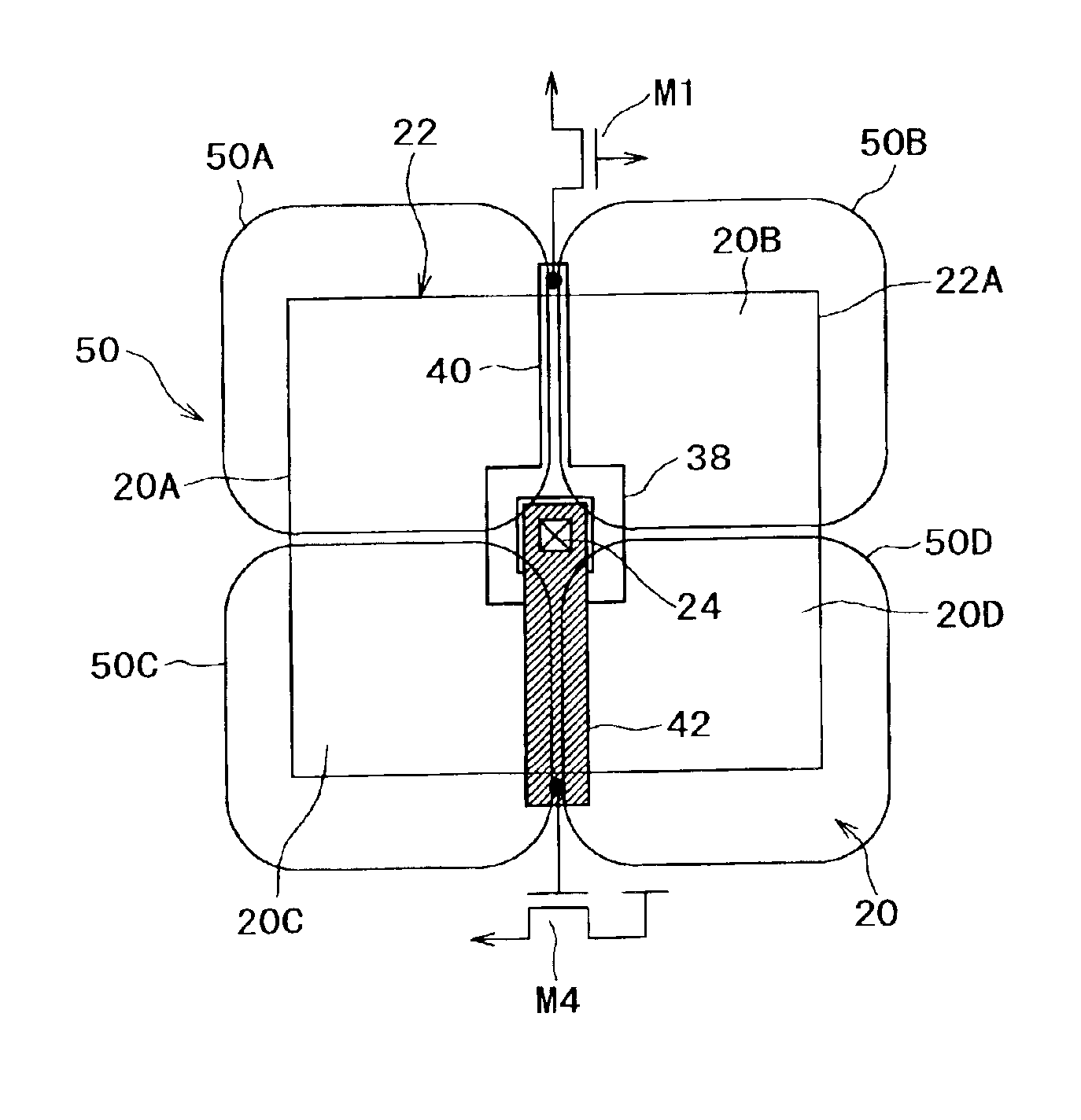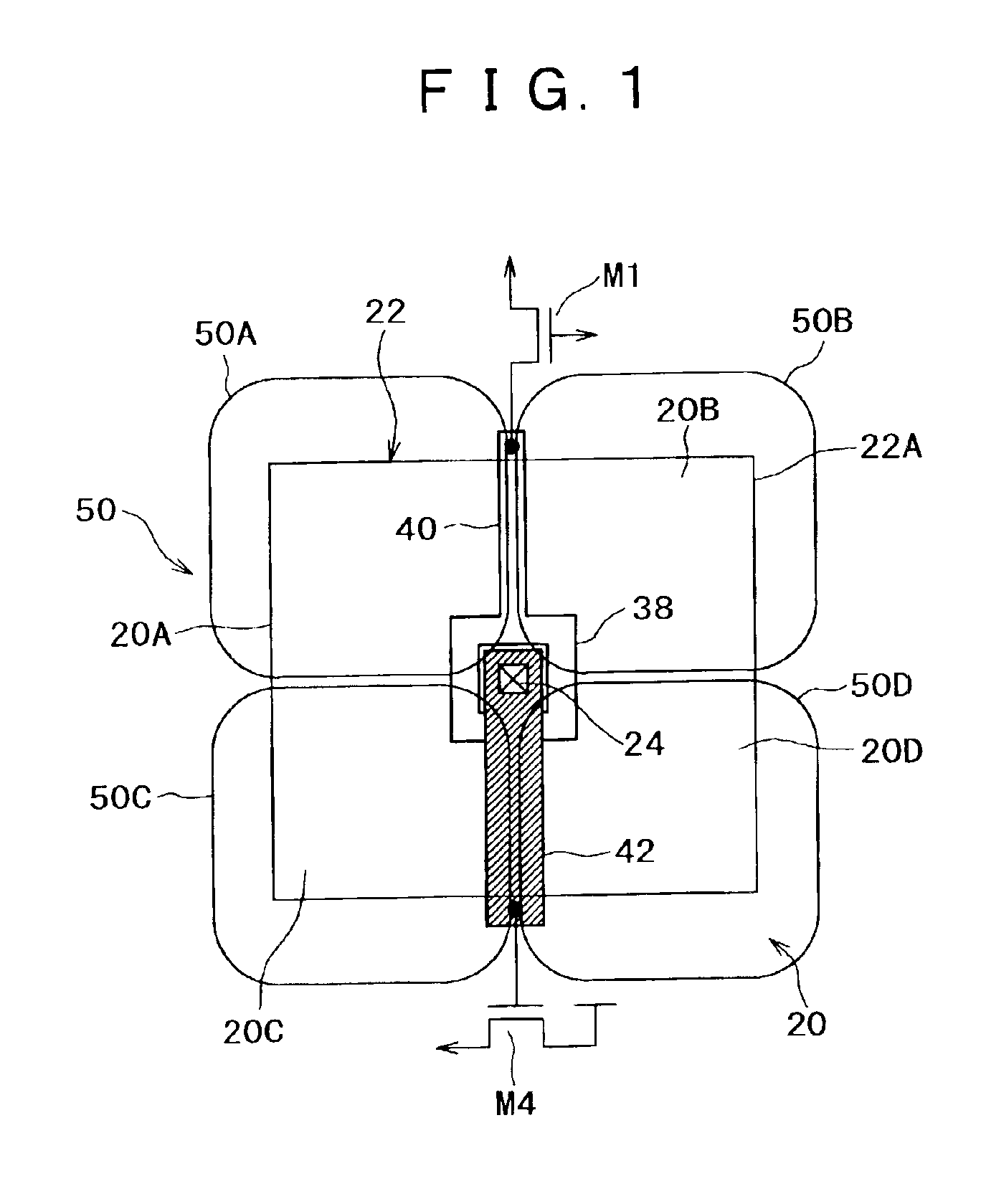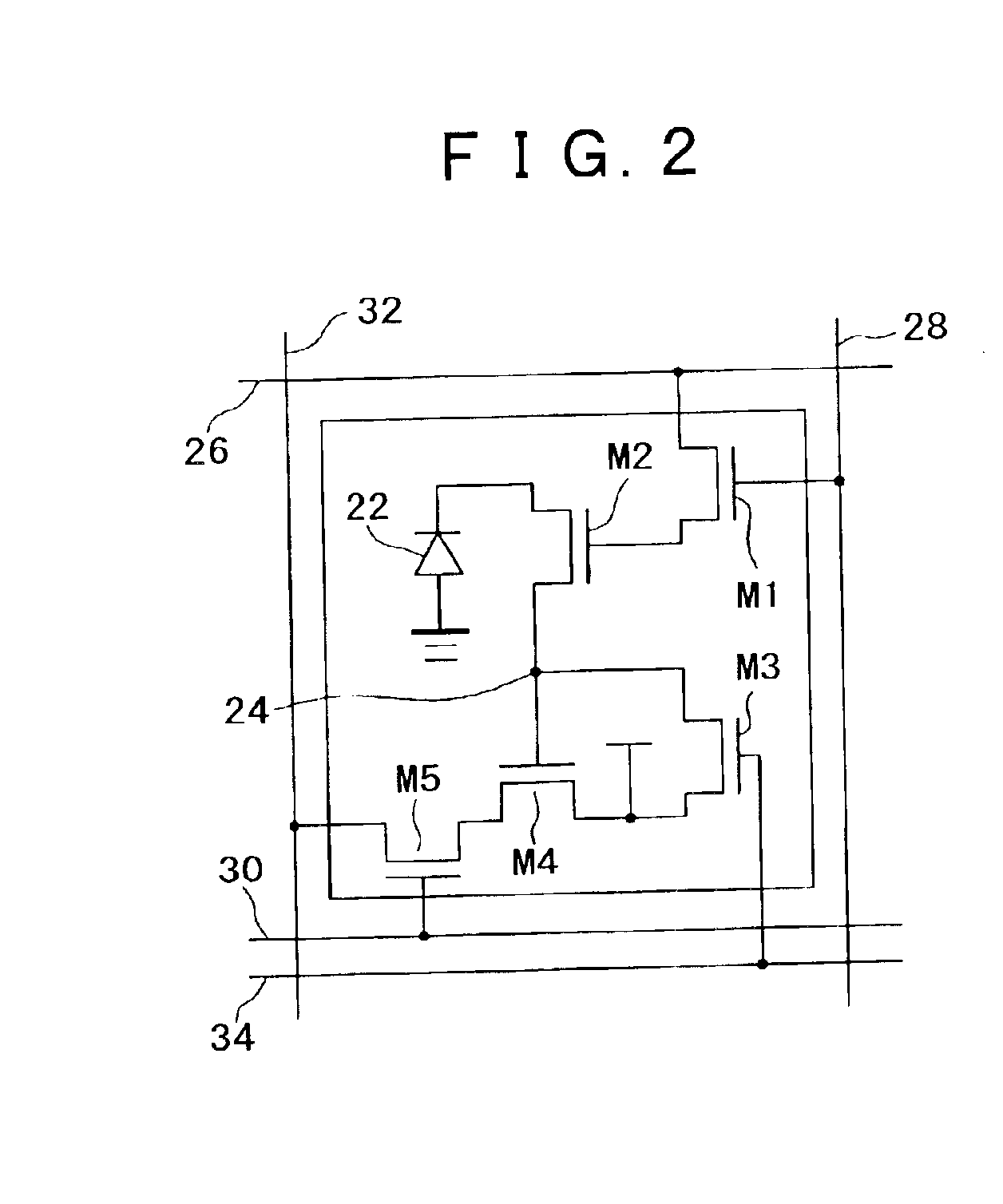Solid-state imaging device
a solid-state imaging and imaging device technology, applied in the direction of radiological control devices, instruments, television systems, etc., can solve the problems of reducing the thickness of the on-chip microlens inclusive of the convex lens, affecting the light transmittivity, and reducing the film so as to facilitate the process control, reduce the thickness of the on-chip microlens, and enhance the effect of light transmission efficiency
- Summary
- Abstract
- Description
- Claims
- Application Information
AI Technical Summary
Benefits of technology
Problems solved by technology
Method used
Image
Examples
first embodiment
[0033]FIG. 1 is a schematic partial plan view showing an exemplary layout of an on-chip microlens in the solid-state imaging device according to the present invention, and FIG. 2 is a circuit diagram showing a circuit configuration of a unit pixel in the solid-state imaging device of FIG. 1.
[0034]The embodiment shown in these diagrams represents one case of applying the present invention to a CMOS type image sensor. Referring first to FIG. 2, an explanation will be given on the structure of a unit pixel in this embodiment.
[0035]As shown in FIG. 2, the unit pixel 20 includes one photodiode 22 and five MOS transistors M1-M5.
[0036]The photodiode 22 generates a signal charge in proportion to the amount of incident light from a light receiving part and then stores the charge therein. In response to a pulse signal supplied via a transfer line 26 and a column selection line 28, the read transistor M2 and the address transistor M1 transfer the signal charge, which is stored in the photodiod...
second embodiment
[0056]FIG. 3 is a schematic partial plan view showing an exemplary layout of an on-chip microlens in the solid-state imaging device according to the present invention. Any components common to those shown in FIG. 1 are denoted by the same reference numerals or symbols, and a repeated explanation thereof will be omitted below.
[0057]This solid-state imaging device has, in addition to the aforementioned structure of FIG. 1, an upper-layer metal wiring 44 along the respective boundaries of convex lens parts 50A, 50B, 50C and 50D of an on-chip microlens.
[0058]The metal wiring 44 is composed of aluminum or the like and is disposed orthogonally to the aforementioned wirings 40 and 42.
[0059]More specifically, the wirings 40, 42 and 44 are disposed by using the entire cross boundaries which are formed by the convex lens parts 50A, 50B, 50C and 50D.
[0060]Such upper-layer wiring 44 may be utilized for control of the various transistors and also for power supply, grounding or the like.
third embodiment
[0061]FIG. 4 is a schematic partial plan view showing an exemplary layout of an on-chip microlens in the solid-state imaging device according to the present invention. Any components common to those shown in FIG. 1 are denoted by the same reference numerals or symbols, and a repeated explanation thereof will be omitted below.
[0062]This solid-state imaging device has, on a photodiode 22, a cross-shaped light shield wiring 46 formed along the respective boundaries of convex lens parts 50A, 50B, 50C and 50D of the microlens 50 for preventing diffused reflection of the light or any stray light.
[0063]The light shield wiring 46 is normally used for power supply and, since it is shaped into a cross, the power supply wiring area can be enlarged to consequently achieve an effect of diminishing the potential fall caused in the case of a current flow.
[0064]Due to the structure mentioned above, it becomes possible to set the circuit wirings 40, 42, 44 and 46 on the photodiode 22 without the nec...
PUM
 Login to View More
Login to View More Abstract
Description
Claims
Application Information
 Login to View More
Login to View More - R&D
- Intellectual Property
- Life Sciences
- Materials
- Tech Scout
- Unparalleled Data Quality
- Higher Quality Content
- 60% Fewer Hallucinations
Browse by: Latest US Patents, China's latest patents, Technical Efficacy Thesaurus, Application Domain, Technology Topic, Popular Technical Reports.
© 2025 PatSnap. All rights reserved.Legal|Privacy policy|Modern Slavery Act Transparency Statement|Sitemap|About US| Contact US: help@patsnap.com



